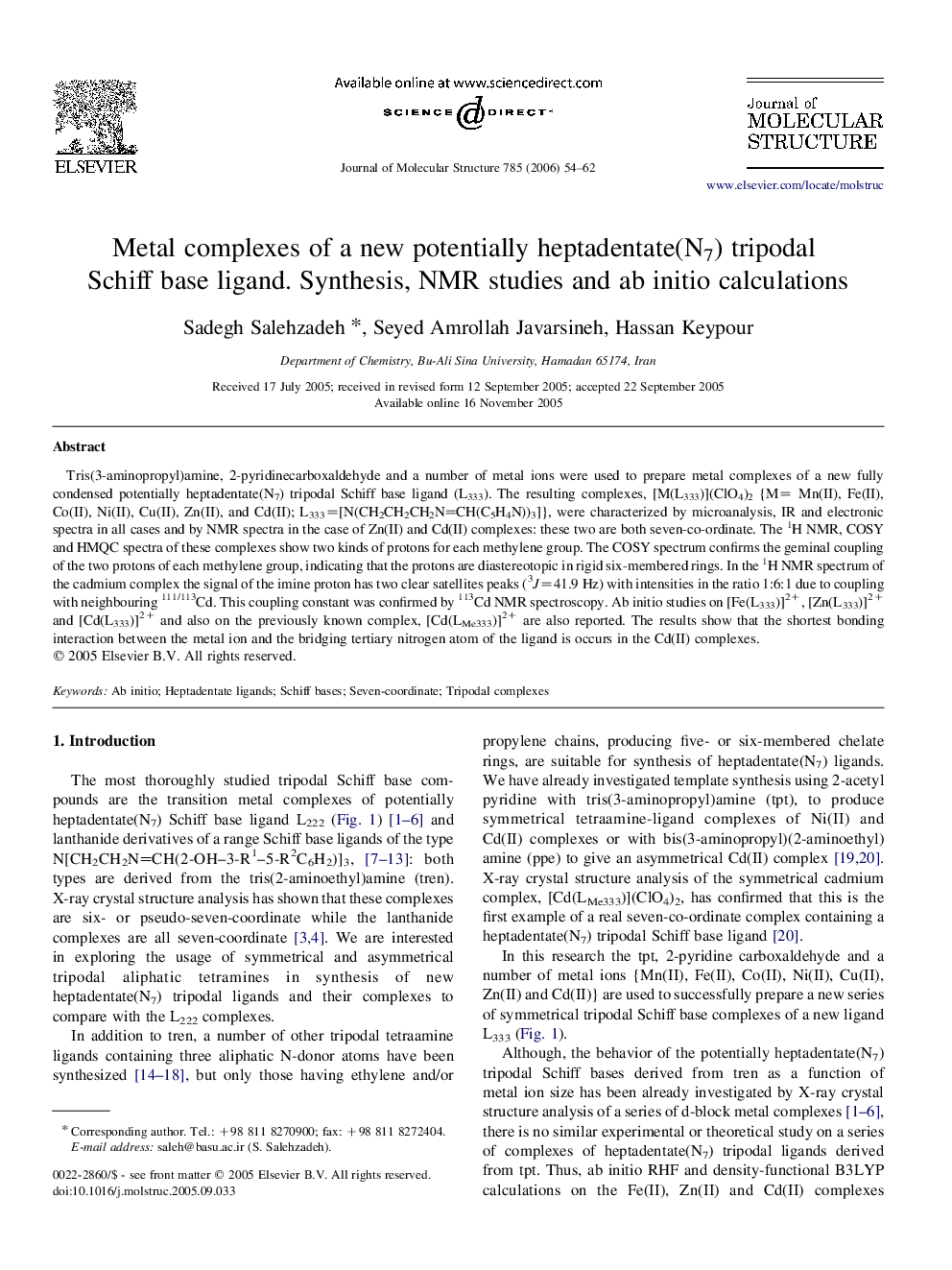| Article ID | Journal | Published Year | Pages | File Type |
|---|---|---|---|---|
| 1412015 | Journal of Molecular Structure | 2006 | 9 Pages |
Tris(3-aminopropyl)amine, 2-pyridinecarboxaldehyde and a number of metal ions were used to prepare metal complexes of a new fully condensed potentially heptadentate(N7) tripodal Schiff base ligand (L333). The resulting complexes, [M(L333)](ClO4)2 {M= Mn(II), Fe(II), Co(II), Ni(II), Cu(II), Zn(II), and Cd(II); L333=[N(CH2CH2CH2NCH(C5H4N))3]}, were characterized by microanalysis, IR and electronic spectra in all cases and by NMR spectra in the case of Zn(II) and Cd(II) complexes: these two are both seven-co-ordinate. The 1H NMR, COSY and HMQC spectra of these complexes show two kinds of protons for each methylene group. The COSY spectrum confirms the geminal coupling of the two protons of each methylene group, indicating that the protons are diastereotopic in rigid six-membered rings. In the 1H NMR spectrum of the cadmium complex the signal of the imine proton has two clear satellites peaks (3J=41.9 Hz) with intensities in the ratio 1:6:1 due to coupling with neighbouring 111/113Cd. This coupling constant was confirmed by 113Cd NMR spectroscopy. Ab initio studies on [Fe(L333)]2+, [Zn(L333)]2+ and [Cd(L333)]2+ and also on the previously known complex, [Cd(LMe333)]2+ are also reported. The results show that the shortest bonding interaction between the metal ion and the bridging tertiary nitrogen atom of the ligand is occurs in the Cd(II) complexes.
